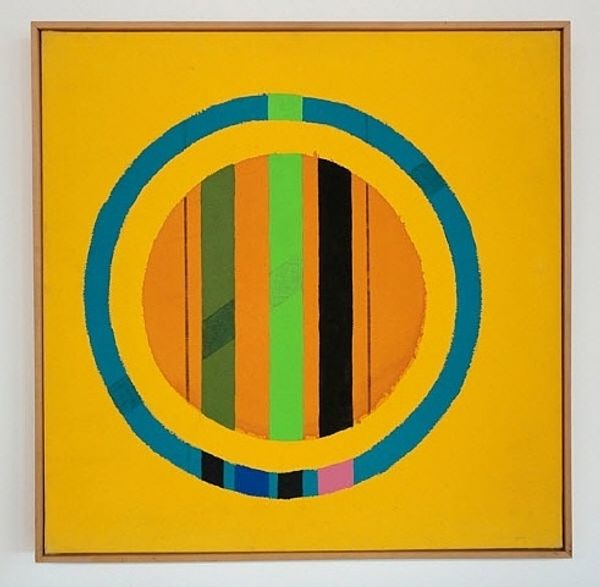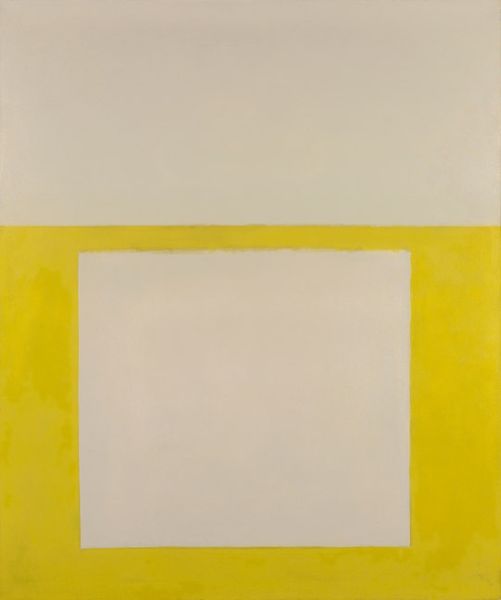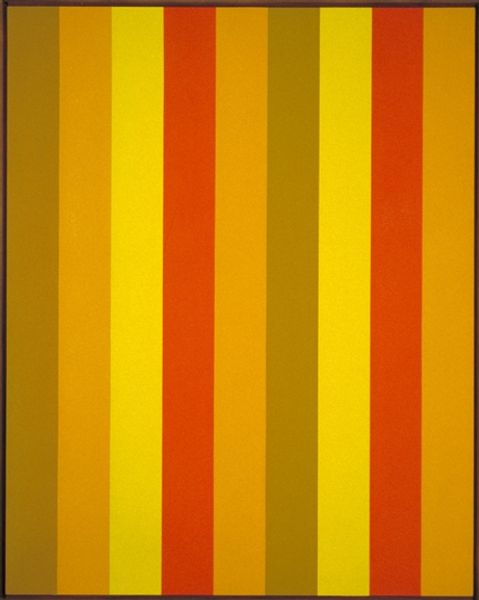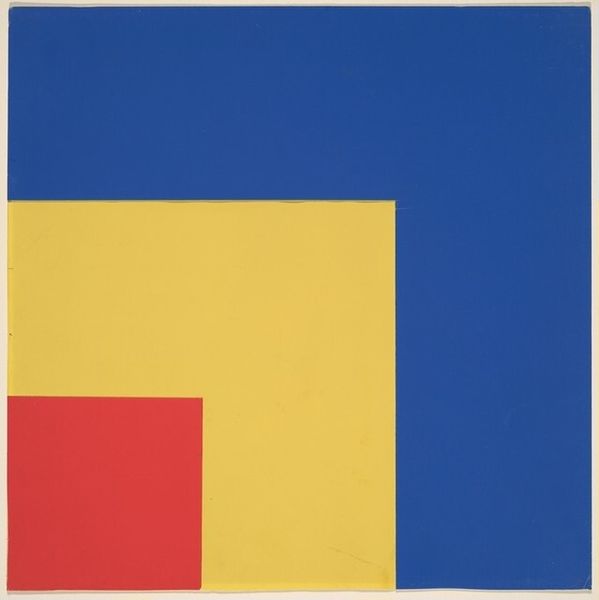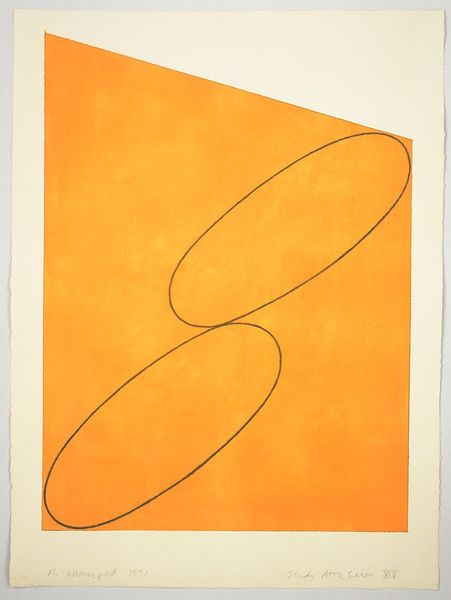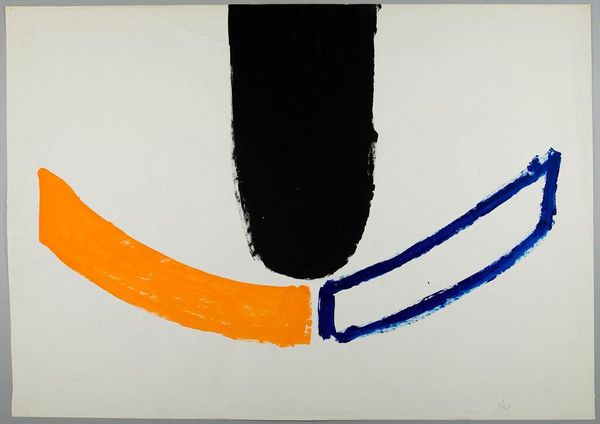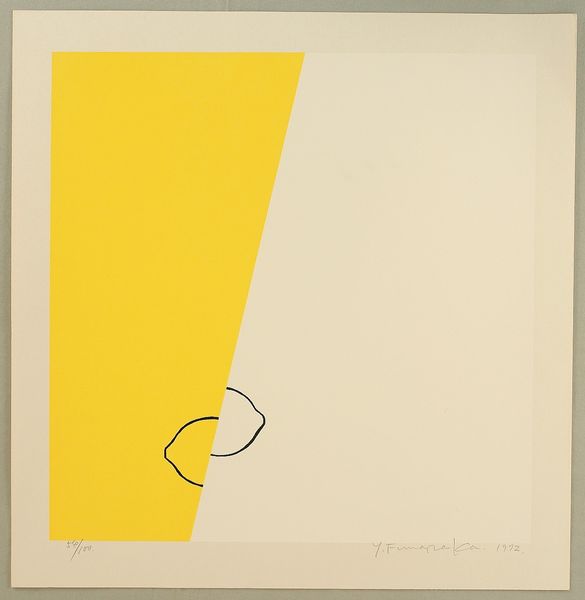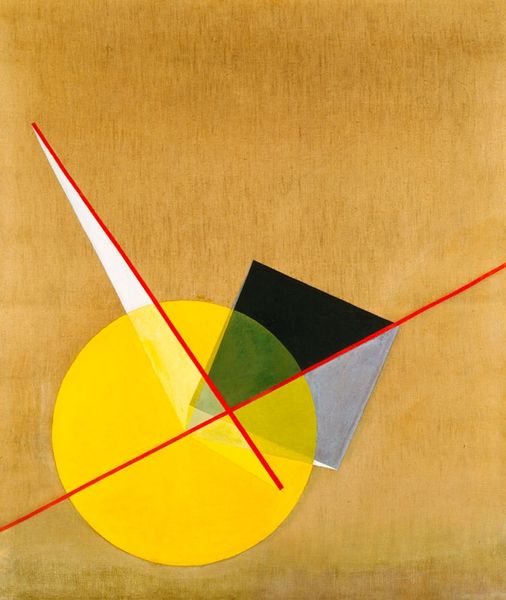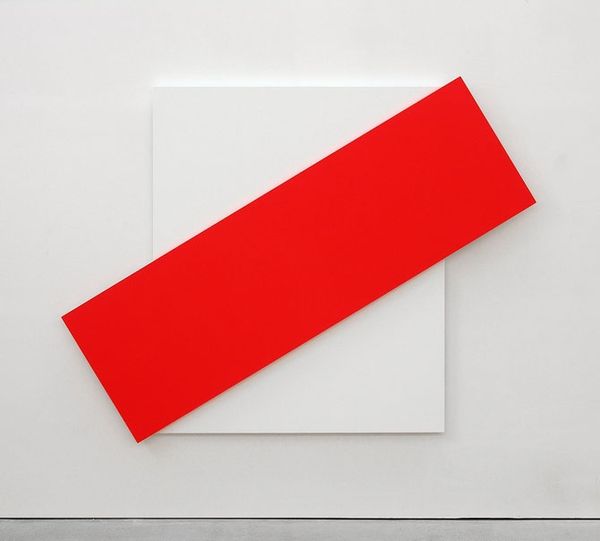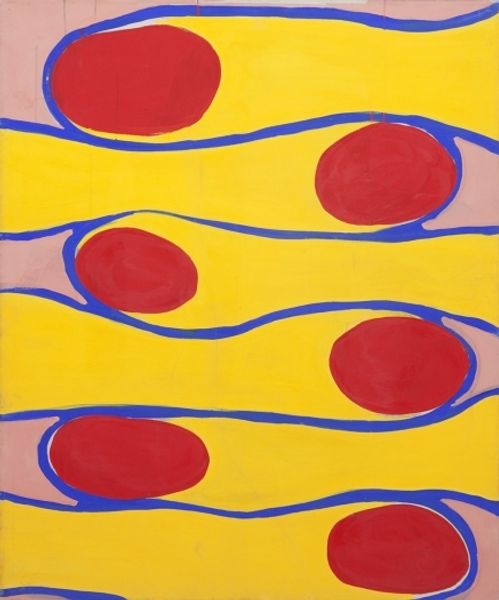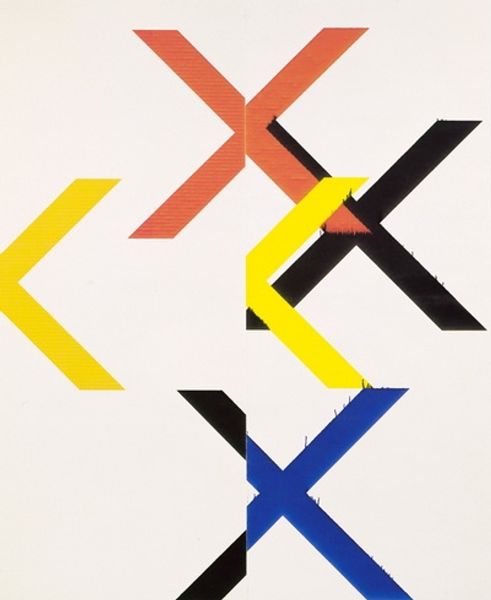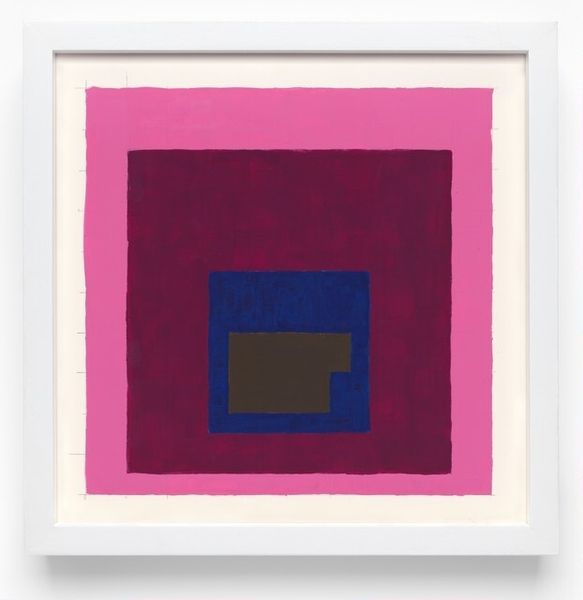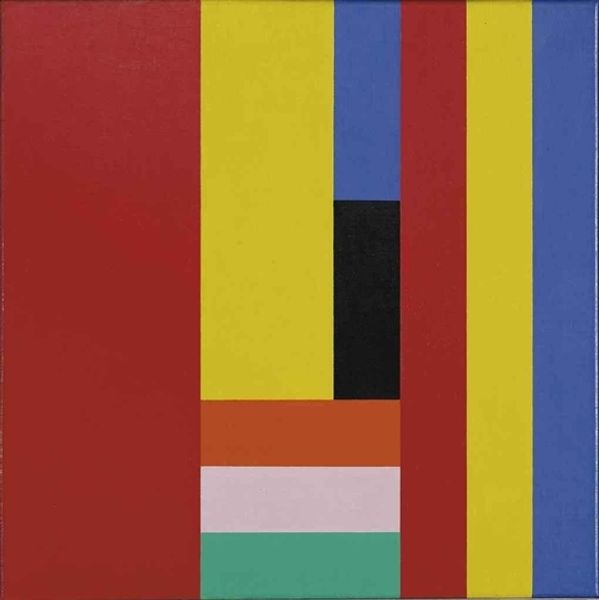
acrylic-paint
#
pop art
#
colour-field-painting
#
acrylic-paint
#
acrylic on canvas
#
geometric
#
abstraction
#
pop-art
Copyright: Edward Avedisian,Fair Use
Curator: Standing before us is "Small painting l," crafted in 1964 by Edward Avedisian, rendered in acrylic paint. Editor: Immediately, that relentless yellow—it's so aggressively cheerful, almost synthetic. And the shapes… basic. I'm curious about the production of such seemingly simple gestures. Curator: It’s compelling to view this within the context of its time. Avedisian, while often associated with Pop Art, engages with the Color Field movement here, participating in that moment’s dialogue regarding abstraction’s role and possibilities post-Abstract Expressionism. Editor: Abstraction, yes, but through such… clean lines. The acrylic, the evenness, no visible brushstrokes. The process feels removed from the artist’s hand. Was Avedisian commenting on industrial processes? The means of mass production applied to art? Curator: Indeed. The "hand" becomes less emphasized; instead, there’s a focus on pure color relationships and form. The socio-political landscape of the 1960s embraced consumerism, and this work perhaps mirrors that embrace, offering easily digestible visual information. The flat planes of color push the boundaries of visual engagement. Editor: But that's it exactly. It's almost TOO easily digestible. Are we meant to passively accept the colors, the shapes, the material's synthetic sheen? The labour put into stretching the canvas to prepare the material is hidden, no sense of toil. It has a distinct detachment. Curator: Detachment might be the point. This piece enters the cultural conversation about art's function, and what images the public ought to see and appreciate. How does art reflect and shape the rapidly evolving world of its viewers? Editor: But, perhaps unconsciously it becomes a symptom, right? The removal of labor, the celebration of surface... what is lost when the making is glossed over? We risk disconnecting from the very processes that give objects meaning. Still the flat surface, and use of materials engages and even pushes at the formal constraint of the field. Curator: A thought-provoking piece, offering a view into the mid-20th century's visual and social landscape, a fascinating lens to view that era. Editor: Agreed. It invites examination into our own values regarding materiality, production, and the continued quest for meaning within abstraction today.
Comments
No comments
Be the first to comment and join the conversation on the ultimate creative platform.
